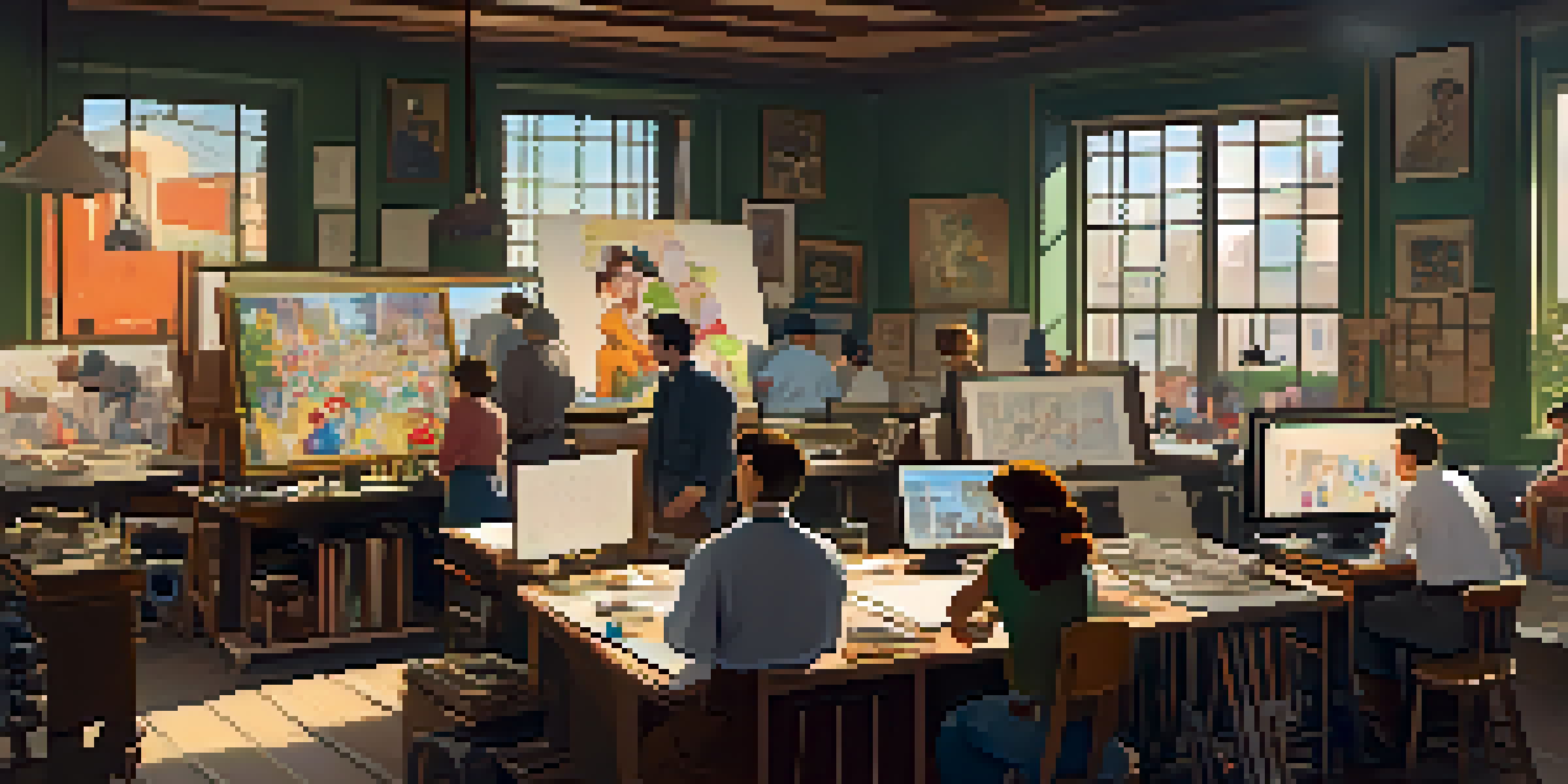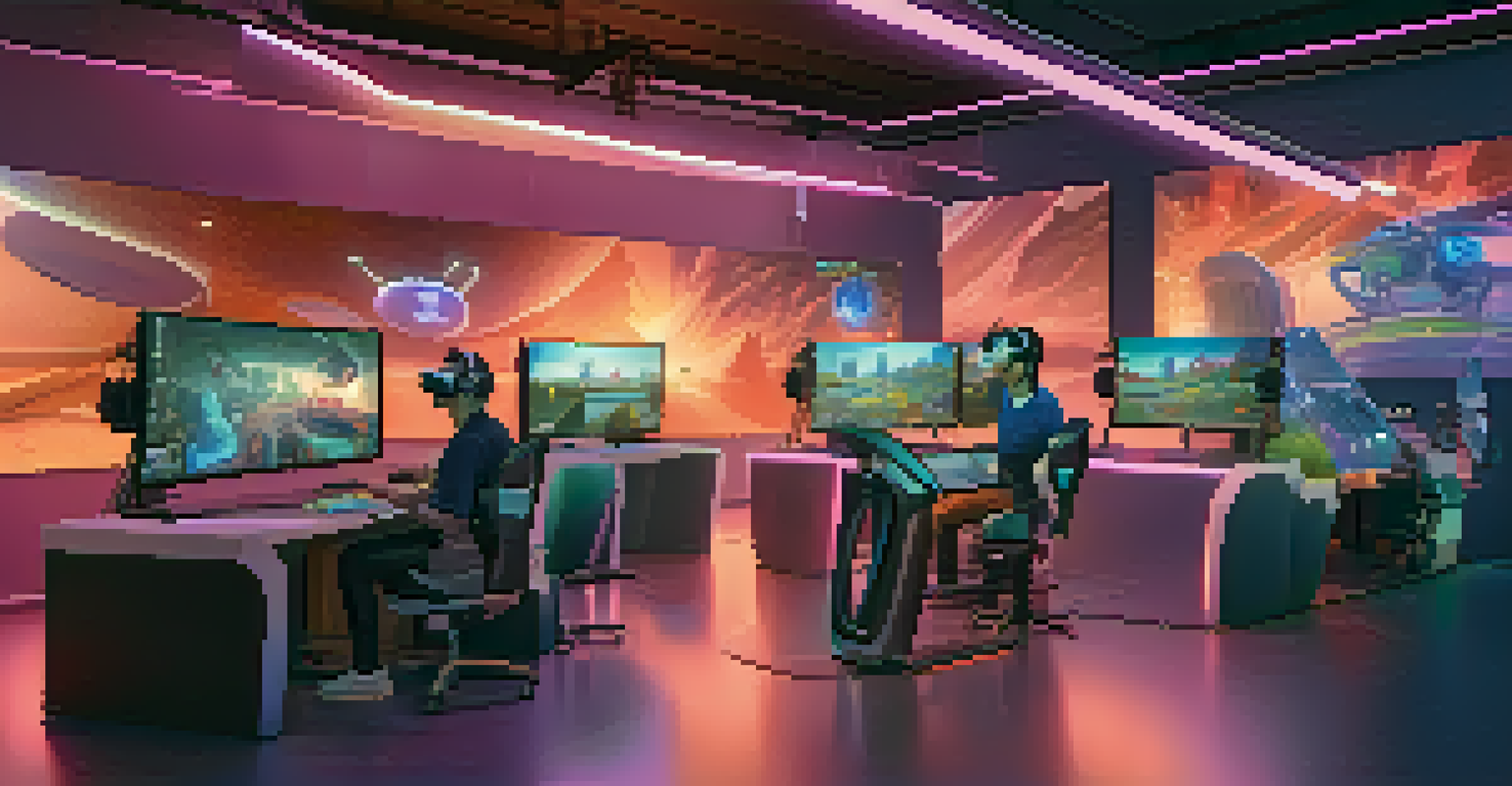The Evolution of Animation: Shaping Hollywood Storytelling

The Birth of Animation: A New Form of Storytelling
Animation began in the late 19th century, introducing a novel way to tell stories. Early pioneers like Émile Cohl and Winsor McCay brought characters to life using simple techniques that captivated audiences. These early animations laid the groundwork for a new medium that combined art and technology, fundamentally changing how stories could be told.
Animation can explain whatever the mind of man can conceive.
As these animated shorts gained popularity, they quickly became a staple in theaters. Audiences were enchanted by the whimsical worlds and imaginative characters that seemed to leap off the screen. The success of these early works proved that animation was not just a novelty but a legitimate storytelling medium with vast potential.
This foundation set the stage for future innovations, as filmmakers began to explore the possibilities of narrative depth within animated stories. As technology advanced, so too did the complexity of the narratives being told, paving the way for animation's evolution in Hollywood.
The Golden Age of Animation: Disney and Beyond
The 1930s to the 1960s is often referred to as the Golden Age of Animation, a period marked by the rise of Walt Disney. Disney’s innovations, like synchronized sound in 'Steamboat Willie' and the introduction of full-length animated features with 'Snow White and the Seven Dwarfs,' revolutionized the industry. These advancements not only showcased the artistic potential of animation but also its ability to tell compelling stories that resonated with audiences of all ages.

During this time, other studios, such as Warner Bros and MGM, also contributed to the flourishing animation landscape. Characters like Bugs Bunny and Tom and Jerry became cultural icons, each bringing their own unique style and humor to storytelling. These animated shorts often tackled social issues and drew on contemporary themes, providing both entertainment and commentary.
Animation's Evolution as Storytelling
Animation has transformed from simple early techniques to a complex art form that captivates audiences with its narrative depth.
This era solidified animation's place in Hollywood as a prominent storytelling medium, influencing generations of animators and filmmakers. It demonstrated that animation could evoke emotions, provoke thought, and deliver messages in ways traditional live-action films sometimes could not.
Technological Advances: From Hand-drawn to CGI
The shift from hand-drawn animation to computer-generated imagery (CGI) in the late 20th century marked a significant turning point. With films like 'Toy Story' in 1995, Pixar made history by releasing the first-ever fully CGI animated feature. This not only revolutionized the animation process but also expanded the creative possibilities for storytelling, allowing for more complex characters and intricate worlds.
The great thing about animation is that it can be anything you want it to be.
CGI technology changed the landscape of animation, enabling filmmakers to blend live-action with animated elements seamlessly. Movies like 'Who Framed Roger Rabbit' showcased how traditional and digital methods could work together, captivating audiences and pushing the boundaries of what was possible. This technological evolution opened the door to new genres and styles of storytelling, making animated films more appealing to a broader audience.
As technology continued to evolve, so did the capabilities of animators. Today, advanced software and tools allow for stunning visual effects and lifelike animations, ensuring that animation remains a vital part of Hollywood storytelling.
Diversity in Animation: Broadening Narratives
In recent years, the animation industry has made significant strides in embracing diversity. Films like 'Coco' and 'Moana' not only showcase different cultural perspectives but also celebrate the richness of global storytelling traditions. This shift reflects a growing recognition of the importance of representation in media, allowing more voices to be heard.
Diverse narratives enrich the fabric of animation, inviting audiences to explore new worlds and experiences. By incorporating various cultural elements into their stories, filmmakers create a more inclusive environment that resonates with a wider audience. This approach has proven successful, as these films often garner critical acclaim and box office success.
Diversity Enriches Animated Narratives
Recent films embrace cultural representation, allowing diverse stories to resonate with a wider audience and enrich the animation landscape.
Moreover, the rise of independent animation studios has further expanded the diversity of storytelling in the industry. These smaller studios often take creative risks, producing unique and thought-provoking animated films that challenge mainstream narratives and offer fresh perspectives.
Animation and Social Commentary: A Powerful Tool
Animation has long served as a powerful medium for social commentary, addressing complex issues in an accessible way. Films like 'Zootopia' tackle themes of prejudice and discrimination, using a vibrant animal world to reflect real societal challenges. This clever approach allows audiences to engage with difficult topics while enjoying the entertaining aspects of animation.
Moreover, animated series like 'The Simpsons' and 'South Park' have pushed the envelope by satirizing contemporary culture and politics. These shows often blend humor with critical insights, encouraging viewers to reflect on societal norms and behaviors. By using animation, creators can present their messages in a way that is both engaging and thought-provoking.
This ability to address serious issues through a light-hearted lens makes animation a unique and effective storytelling tool. It fosters discussions around important topics, bridging gaps and encouraging understanding among diverse audiences.
The Future of Animation: Innovations on the Horizon
As we look to the future, the animation industry continues to evolve, driven by advancements in technology and storytelling techniques. Virtual reality (VR) and augmented reality (AR) are opening up new possibilities for immersive experiences, allowing audiences to engage with animated worlds in unprecedented ways. This could redefine how stories are told and experienced, making the viewer an active participant.
Additionally, the rise of streaming platforms has changed the landscape for animated content, providing opportunities for diverse stories that might not have found a home in traditional theaters. Shows like 'Castlevania' and 'Big Mouth' have found success by pushing boundaries and exploring themes that resonate with modern audiences, showcasing the versatility of animation as a medium.
Animation as Social Commentary
Through clever storytelling, animation addresses serious societal issues, making complex topics accessible and engaging for all audiences.
As animation continues to grow and adapt, it will undoubtedly remain a powerful force in Hollywood storytelling. The blend of technology, creativity, and diverse narratives promises an exciting future for animated films and series.
Conclusion: Animation's Lasting Impact on Storytelling
The evolution of animation has profoundly shaped Hollywood storytelling, transforming it into a multifaceted art form. From its humble beginnings to the technological marvels of today, animation has demonstrated its ability to entertain, educate, and inspire. This medium's unique capacity to convey complex emotions and narratives ensures its place as a cornerstone of modern storytelling.
As we celebrate the rich history of animation, it's essential to recognize the creators, innovators, and storytellers who have contributed to its legacy. Their vision and creativity have paved the way for future generations of animators, ensuring that animation will continue to evolve and thrive in the years to come.

Ultimately, animation is more than just entertainment; it is a reflection of our society, our dreams, and our collective imagination. As we move forward, we can look forward to the new stories and experiences that animation will bring into our lives.